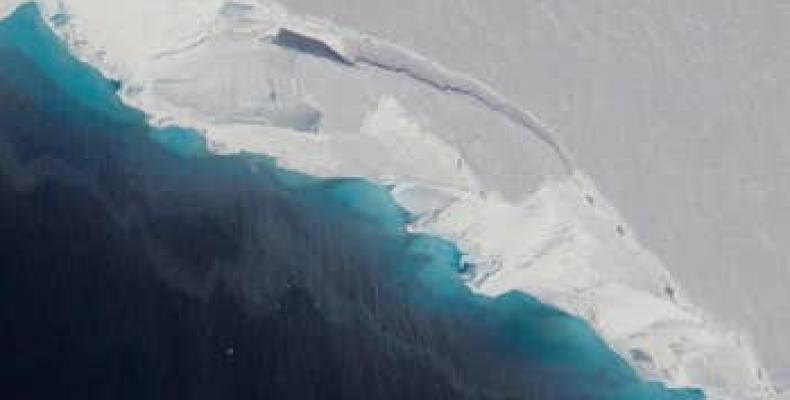A massive hole has been discovered in the Antarctic’s so-called doomsday glacier suggesting it may be melting even faster than scientists have long feared.
The massive Thwaites ridge would send sea levels surging by up to two feet if it dissolved completely – enough to submerge major coastal cities across the globe.
Because the UK-sized chunk acts as a barrier protecting the vast West Antarctica, its melting would also destabilise the entire region by exposing it to warmer waters.
“The size of the cavity is surprising, and, as it melts, it’s causing the glacier to retreat,” said Pietro Milillo, a NASA radar scientist who led the new research into Thwaites.
He headed a team analysing data collected by Italian and German satellites, as well as NASA’s own Operation IceBridge, a program in which aircraft equipped with ice-penetrating radar fly over polar regions.
The researchers expected to see significant loss of ice, but the scale of the void came as a shock, added Mr Milillo.
The findings – published in the journal Science Advances – come as a team of global scientists begin the largest ever research project undertaken about the glacier.
International Thwaites Glacier Collaboration – a five-year, £38m effort led by the UK and US – will seek to understand why it is changing so rapidly.
It will use robots and ocean weather stations, as well as more than a dozen seals fitted with sensors, to collect data about the ice and the surrounding water.
Now, scientists say a cavity beneath the glacier is far larger than previously thought – making it far more vulnerable to collapse.
The void, in total, is about six miles long and 1,000 feet deep — representing the loss of some 14 billion tons of ice.


